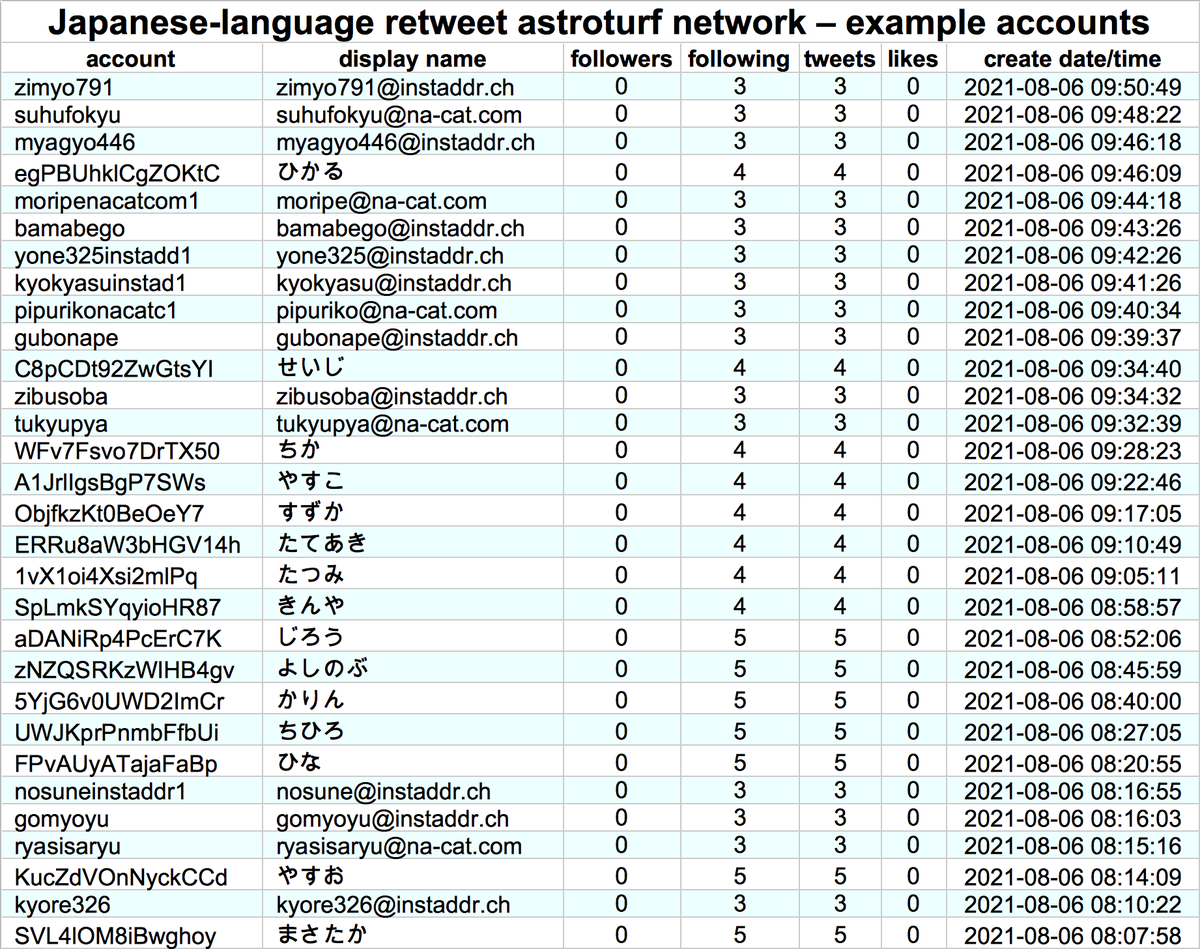This tweet from @17LiveJP received more than ten times as many retweets as likes (20.5K vs 1.5K), a sign of potential astroturfing. Also noteworthy: the tweet was disproportionately retweeted by accounts with default pics created within the last week.
cc: @ZellaQuixote

cc: @ZellaQuixote


These accounts are part of a retweet network consisting of (at least) 2892 accounts with default profile pics created between July 28th and August 6th 2021. Many of the accounts have an email address in their display names; the remainder have short Japanese display names. 



The accounts in this network (allegedly) post all of their tweets via the Twitter Web App. All content to date is retweets. None of the accounts in the network has ever liked a tweet, and none follows more than 9 accounts (most follow the same 3; more on that later). 





Thus far, this network has bestowed a total of 10557 retweets on 18 different tweets from 12 accounts. The most frequently amplified tweets appear to be Japanese-language giveaway tweets from @shionogi_hc, @17LiveJP, @mierukochan_PR, and @dm_photdecore. 



The accounts in this astroturf network follow the same set of accounts they retweet, although most only follow three or four rather than all of them. @shionogi_hc, @17LiveJP, @mierukochan_PR are each followed by a majority of the network. 

• • •
Missing some Tweet in this thread? You can try to
force a refresh





























